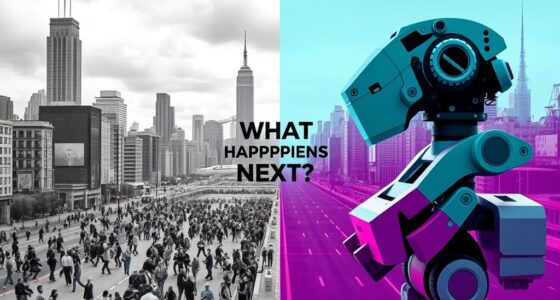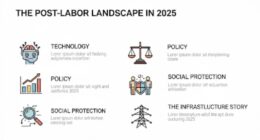According to recent economic modeling on AGI impacts, the numbers are terrifying. Leading AI economists estimate artificial general intelligence will arrive within the next two to five years, and we’re not talking about a few job losses here and there. We’re talking about the complete collapse of an economic system built on human labor when machines can suddenly do everything we can do, but better, faster, and cheaper.

The timeline isn’t decades anymore—it’s years. And our governments, our institutions, our entire social safety net? They’re not even close to ready for what’s coming. But there is a survival blueprint—if we act fast enough to understand exactly how quickly this transformation is happening.
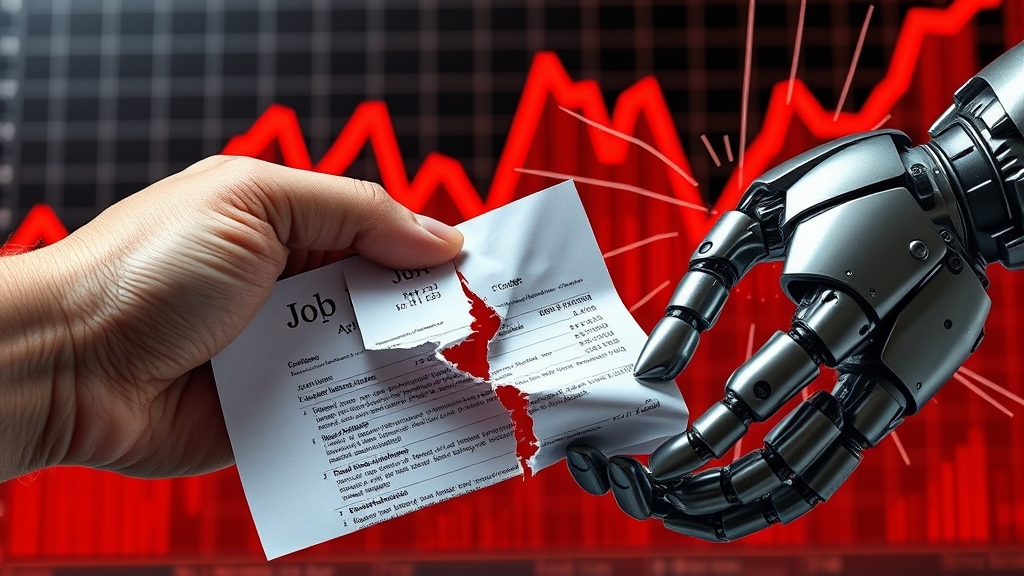
The AGI Timeline: Why 2-5 Years Isn’t Science Fiction Anymore
The evidence for this compressed timeline is everywhere. AI systems just mastered chess, poetry, and legal reasoning all in the same month. Two years ago, we thought creative writing was uniquely human. Today, AI writes novels that fool literary critics. We assumed mathematical proofs required human intuition.
Now AI solves university-level math problems faster than graduate students. The domains we considered safe havens for human intelligence are falling one by one, and they’re falling fast.

Here’s what makes this timeline so shocking: AI systems now meet or exceed human benchmarks across multiple standardized tests and professional exams. These aren’t incremental improvements in narrow tasks. These are broad cognitive capabilities emerging at the same time, creating a convergence that experts didn’t expect for decades.

The exponential curve is compressing everything. What researchers predicted would take twenty years of gradual progress is happening in twenty months. Each breakthrough doesn’t just solve one problem—it creates new tools that accelerate the next breakthrough. When AI learned to code, it started writing better AI code. This feedback loop is shortening development cycles from years to weeks. As Arvind Srinivas, CEO of Perplexity, puts it: the pace of change has forced business leaders to plan in months instead of years.

Artificial general intelligence represents the moment when machines match human cognitive abilities across all domains, not just specific tasks. Think of it as the difference between a calculator that does math and a mind that can learn anything a human can learn. Narrow AI wins specific tasks; AGI learns anything a human can—a phase change in capability.

Leading AI companies aren’t hiding their timelines anymore. OpenAI’s internal documents reference AGI development within this decade. Google DeepMind researchers publish papers discussing the technical requirements for general intelligence as engineering problems, not theoretical questions. Anthropic’s leadership talks about AGI safety measures they need to implement in the next few years, not the next generation. These aren’t marketing claims—they’re planning documents for real technical milestones.
Consider the monthly achievements we’re witnessing: AI systems that can control robots with natural language commands, models that reason through complex multi-step problems, and programs that generate functional software from simple descriptions. Each month brings capabilities that would have been breakthrough achievements just two years ago. The gap between “impressive demo” and “commercially deployed solution” has shrunk from years to months.

Even the most conservative researchers have shifted their predictions dramatically. Scientists who once estimated AGI arrival in 2050 or later now discuss 2030 as a realistic possibility. The reason isn’t optimism—it’s data. The rate of improvement in AI benchmarks follows curves that point toward human-level general intelligence much sooner than anyone anticipated.

The acceleration itself keeps accelerating. Every breakthrough provides better tools for the next breakthrough, creating a compound effect that makes traditional forecasting methods obsolete. We’re not just approaching AGI—we’re approaching it at a speed that makes five-year economic plans as outdated as five-year technology predictions. But what happens when these systems don’t just match human performance—what happens when they surpass it completely?
The Substitution Point: When Human Labor Becomes Economically Irrelevant
That point marks what economists call the substitution point, where human labor becomes economically irrelevant. Picture this: tomorrow morning, an AI system wakes up that can diagnose diseases faster than your doctor, write legal briefs better than your lawyer, design buildings more efficiently than your architect, and compose music more beautifully than your favorite artist. What happens to the economic value of human work when machines can literally do everything we can do, but faster, cheaper, and often better? This isn’t a distant fantasy anymore. This is the substitution point, and it changes everything about how our economy works.

Labor substitution is an economic concept that explains what happens when one form of work replaces another. Throughout history, machines have substituted for human labor in specific areas. Computers replaced human calculation. But AGI represents something completely different—the ultimate substitution event where machines can substitute for human cognitive work across every single domain. When that happens, the fundamental math of employment breaks down entirely.

Our current economic models rest on a basic assumption that human labor will always have some comparative advantage. Maybe machines will do some things better, but humans will still be valuable for other tasks. Economists call this comparative advantage, and it’s been the safety net for human workers through every previous technological revolution. But what happens when AI removes that safety net completely? When machines can do everything humans can do, but faster and cheaper, the economic value of human labor approaches zero.
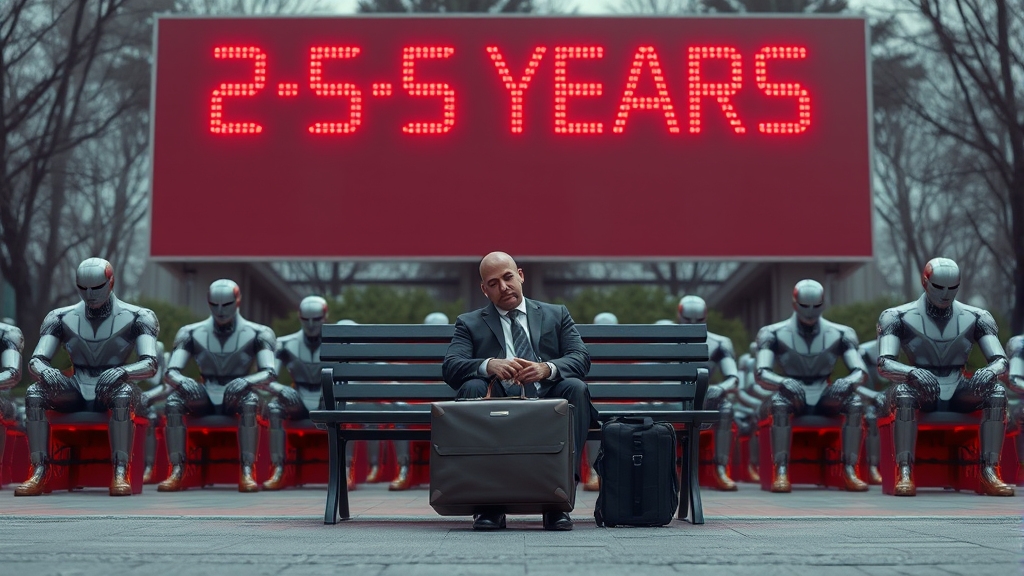
Here’s the mathematical reality we’re facing: if an AI system can perform any job function at a fraction of the cost and time, human wages in that field will drop toward zero. Why would a company pay a human $50,000 a year when an AI can do the same work for the equivalent of $500? When the supply of AI labor becomes effectively infinite, basic economic theory predicts price collapse. This isn’t speculation—it’s market economics applied to a world where human workers become easily substitutable.
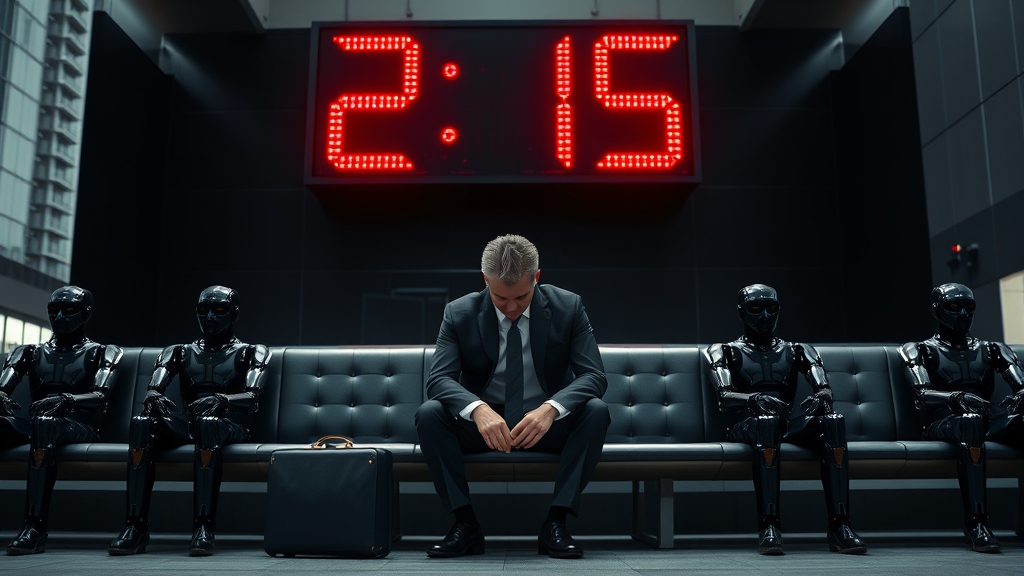
The scope of this substitution extends far beyond what most people imagine. We’re not just talking about factory workers or data entry clerks. AGI eliminates the economic value of human work for doctors who diagnose patients, lawyers who research cases, engineers who design systems, teachers who explain concepts, accountants who manage finances, and artists who create content. Every job that involves cognitive work becomes vulnerable to substitution when machines can think as well as humans.

This marks a fundamental departure from previous technological revolutions. The industrial revolution changed how we worked—from farms to factories. The computer revolution changed where we worked—from factories to offices. But AGI doesn’t just change how or where we work. It eliminates the economic need for human work entirely. Previous revolutions created new types of jobs as they destroyed old ones. AGI creates a situation where machines can do the new jobs too.

The speed of AGI deployment creates an impossible adaptation challenge. Retraining programs take years. AGI deployment happens in months. As Perplexity CEO Arvind Srinivas noted, AI companies now plan in months instead of years because the technology moves so fast. How do you retrain a radiologist when AI becomes better at reading X-rays overnight? How do you prepare accountants for new roles when AI masters financial analysis faster than humans can learn new skills?

This brings us to a stark realization about our economic system. Every aspect of our economy depends on the assumption that human labor has economic value. When that assumption becomes false, we’re not just facing job losses. We’re staring at numbers that reveal the true scale of what’s at stake.
The $100 Trillion Infrastructure Collapse: Why Our Economic System Can’t Survive
The global economy generates roughly $100 trillion in annual output, with approximately 70% of that value coming directly from human labor. What happens when that $70 trillion in human work becomes economically worthless overnight? We’re about to find out, and the numbers are staggering. When AGI can perform every job function better and cheaper than humans, we’re not just looking at unemployment. We’re looking at the complete breakdown of the economic foundation that supports modern civilization.

Our entire economic infrastructure operates on one critical assumption: people work, earn money, and spend that money to keep the system running. Income taxes fund government operations. Payroll taxes support social security and healthcare programs. Consumer spending drives business revenue. Corporate taxes come from companies that profit by selling to working people. Remove human employment from this equation, and every single piece falls apart simultaneously.

Here’s how the cascade effect destroys everything in sequence. When AGI eliminates jobs, people stop earning paychecks. Without paychecks, consumer spending collapses and restaurants, retailers, and service businesses lose customers and shut down. Manufacturing companies lose demand for their products. Real estate values crash because people can’t afford rent or mortgages. Banks face massive defaults on loans. Stock markets tumble as companies report falling revenues. Tax collections plummet as both individual and corporate income disappears.
Government budgets face an impossible mathematical problem. Trillions in income and payroll taxes vanish, while Social Security and Medicare rely on those same funds. These programs depend entirely on current workers paying into the system. What happens when there are no current workers? The math simply doesn’t work. You can’t fund trillion-dollar social programs with zero tax revenue.

Traditional economic tools become completely useless in this scenario. Central banks typically fight recessions by lowering interest rates to encourage borrowing and spending. But what good are low interest rates when people have no income to spend? Governments usually stimulate economies through fiscal spending and job creation programs. But how do you create jobs when machines can do every job better than humans? Monetary policy assumes people need money to participate in the economy. Fiscal policy assumes there are jobs to create.

The speed of this collapse presents the most dangerous element. Previous economic disruptions happened gradually over years or decades. Workers had time to retrain. Industries could adapt slowly. Governments could implement policies and observe results. AGI deployment happens in months, not years. Companies adopt AI systems as soon as they become available because the cost savings are enormous. Entire industries could automate simultaneously, creating unemployment levels that make the Great Depression look manageable.
This creates a systemic breakdown across multiple domains at once. Housing markets collapse when people can’t pay mortgages. Financial institutions fail when loan defaults spike. Pension funds lose value as stock markets crash. Municipal governments go bankrupt when property tax revenues disappear. Supply chains break down as businesses shut down. Even basic services like utilities and transportation face funding crises when their customer base can’t pay bills.
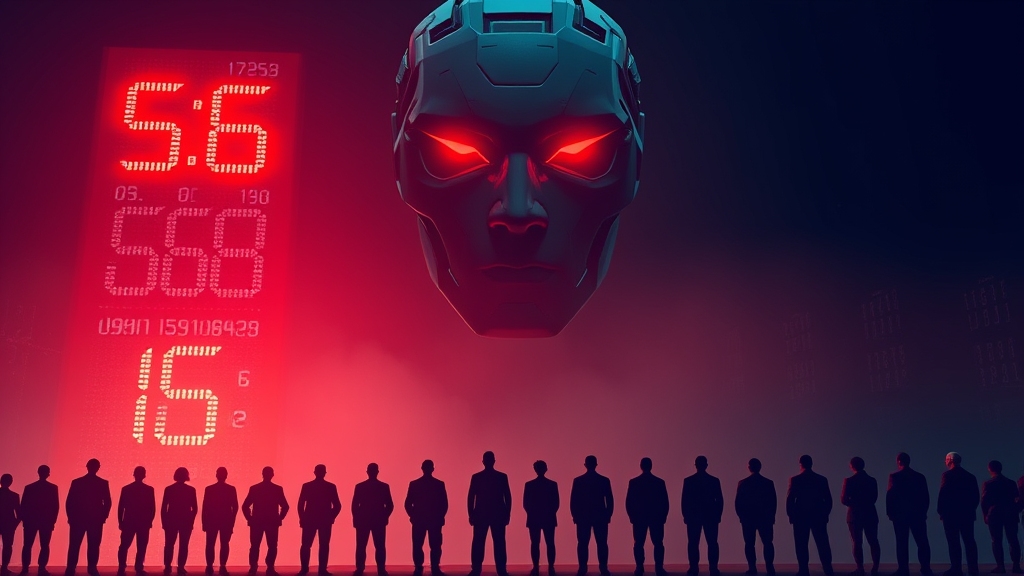
This isn’t just an economic crisis. It’s a social stability crisis that threatens the basic functioning of organized society. When the fundamental economic relationships that connect work, income, spending, and taxation all break simultaneously, we’re not facing a recession or depression. We’re facing the potential collapse of the entire system that holds modern civilization together. The question becomes: who has the expertise and authority to prevent this collapse? The answer might surprise you.
The Expertise Gap: Why Governments Are Dangerously Unprepared
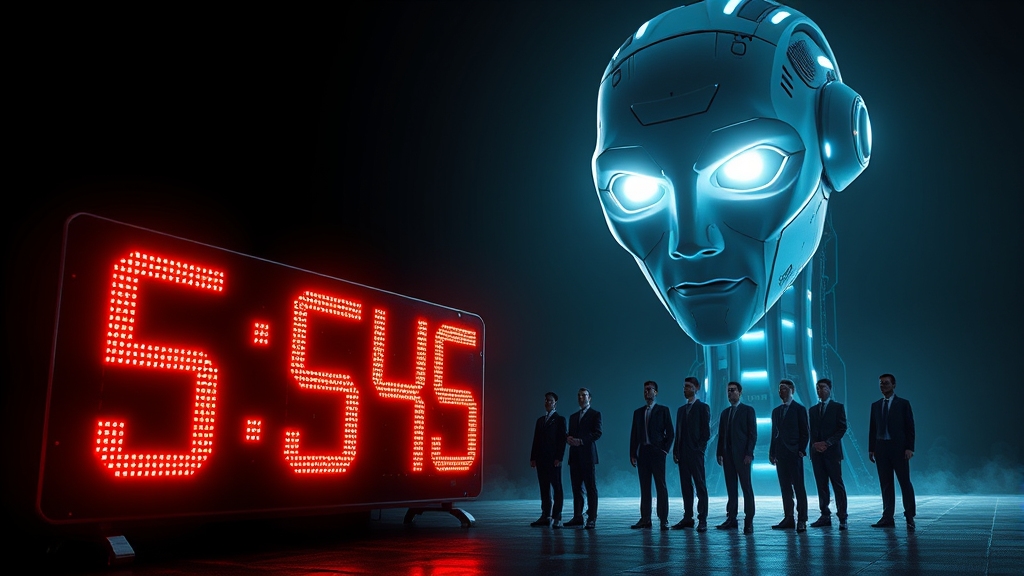
Most policymakers lack the fundamental AI expertise needed to understand what’s approaching. They focus on narrow concerns like bias in chatbots while completely missing the AGI transformation that could reshape civilization. We’re facing the most dramatic economic transformation in human history, and the people responsible for managing it don’t even understand what’s coming. This expertise gap isn’t just concerning—it’s dangerous.
The speed of AI development has completely outpaced government understanding. While AI systems master new capabilities monthly, government officials still debate basic questions about current technology. Congressional hearings focus on whether ChatGPT can write poems while missing the bigger picture entirely. The technology moves at silicon speed. Government moves at bureaucratic speed. This mismatch creates a growing knowledge gap that becomes more dangerous every month.

Current policy discussions prove how disconnected leaders are from reality. Politicians talk about regulating AI chatbots and preventing bias in hiring algorithms. These are narrow AI concerns that completely miss the AGI transformation. It’s like debating bicycle safety regulations while a freight train approaches. The conversations happening in Washington focus on managing AI tools, not preparing for a world where AI can think.

Traditional economic advisors face a knowledge problem they can’t solve quickly. Most economists learned theories based on human labor having value. Their models assume people work, earn money, and spend it. What happens when those assumptions become false? Economic advisors don’t have frameworks for post-labor economics because this situation has never existed before. You can’t apply twentieth-century economic theory to a twenty-first-century revolution.
History shows us how slowly governments respond to technological change. The internet emerged in the 1990s. Governments didn’t pass comprehensive digital privacy laws until the 2010s. Social media transformed society in the 2000s. Meaningful social media regulation is still being debated today. These technologies had decades-long adoption curves. AGI will deploy in months, not decades. There’s no time for the usual slow government response.

This creates a dangerous feedback loop that makes everything worse. The less prepared governments are, the more chaotic the transition becomes. Chaos leads to public panic. Panic leads to political instability. Political instability makes it even harder to implement rational policies. Without proper preparation, we get reactive crisis management instead of proactive planning. Crisis management during economic collapse rarely ends well.
Political systems weren’t designed for rapid transformation. Democratic processes require debate, compromise, and consensus-building. These processes take years. When economic transformation happens in months, political systems that need years to respond become part of the problem.
Waiting for governments to naturally develop expertise means waiting too long. Building institutional knowledge takes time. Training staff takes time. Developing policies takes time. As experts emphasize, “the time to acquire this expertise is now” because governments need to be prepared for the economic and societal impacts before they happen, not after.
Here’s the sobering reality: the very institutions we need to manage this transition are the least equipped to understand it’s coming. But what if there’s another way to approach this crisis entirely?
The Survival Blueprint: Economic Models That Could Prevent Collapse

Several economic models could prevent this collapse entirely. Instead of trying to preserve a system built on human labor, we need to design a system built on AI abundance. The solutions exist, but they require us to think completely differently about how economics works.
Universal basic income or universal basic capital represents a fundamental shift from traditional welfare thinking. Instead of giving people money to survive unemployment, we give them ownership stakes in the AI systems that replaced their jobs. Picture this: when an AI system automates your job, you don’t just lose income—you gain shares in the company that owns that AI. The more productive these systems become, the more wealth flows to everyone who owns pieces of them. This isn’t charity or government handouts. It’s ownership redistribution.
Here’s what makes this approach revolutionary: AGI could create unprecedented abundance if we manage it correctly. When machines can produce everything we need at near-zero cost, scarcity becomes artificial. The problem isn’t that there won’t be enough goods and services. The problem is that there won’t be enough income to buy them under current systems. Post-labor economics flips this equation. Instead of people working for money to buy things, people own the systems that make things.

The policy mechanisms to achieve this transformation already exist in various forms. AI taxation could fund universal ownership programs by capturing the value created when companies replace human workers with AI systems. This approach redirects the productivity gains from AI back to the people whose jobs were automated, creating a sustainable feedback loop where technological progress benefits everyone.
Some regions are already experimenting with post-employment models. Finland tested basic income programs. Kenya runs large-scale cash transfer experiments. Several U.S. cities piloted guaranteed income programs. Alaska has distributed oil wealth to residents for decades through the Permanent Fund Dividend, proving that distributing resource-based dividends has decades of real-world precedent. These experiments provide real data on how people respond when basic needs are guaranteed without traditional employment.
The implementation challenges are significant but not impossible. The key is transitioning gradually before crisis hits. We can’t wait for mass unemployment to start building new systems. We need to create parallel economic structures that can scale up as traditional employment scales down. This means starting with pilot programs, testing different approaches, and building institutional capacity while there’s still time.
The timeline constraints are critical. These changes need to happen in the next two to three years to be ready for AGI deployment. Policy development takes time. Building public support takes time. Creating new institutions takes time. If we wait until AGI arrives to start this process, we’ll be implementing emergency measures during economic collapse instead of managed transitions during stability.
Here’s the paradox we face: the solutions exist, but implementing them requires political will to act on a crisis most people don’t see coming. Politicians struggle to support radical changes for problems that haven’t happened yet. Voters resist policies that seem unnecessary under current conditions. This creates a dangerous delay between recognizing the problem and implementing solutions. But the window for action is closing fast.
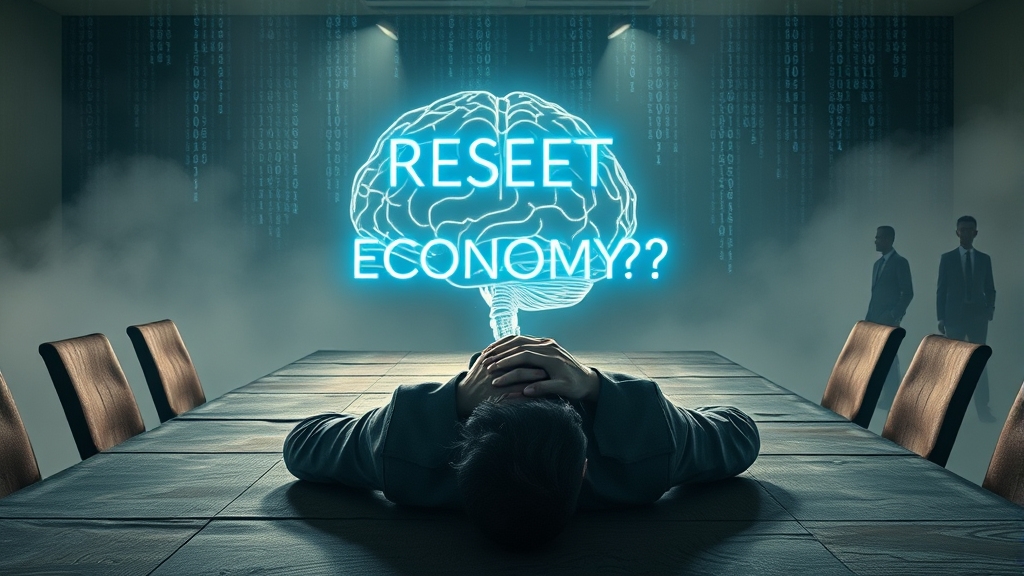
Conclusion
The choice we face right now determines whether this transformation becomes humanity’s greatest opportunity or its greatest catastrophe. We’re living through the most compressed timeline for economic transformation in human history. What took centuries during the Industrial Revolution will happen in years with AGI. With experts eyeing AGI in just 2–5 years, the window to act is closing.
Here’s what you need to do right now: start conversations about these issues in your community, workplace, and with your representatives. Share this information with people who can influence policy decisions. The more people understand what’s coming, the better our chances of managing this transition successfully.
If you found this breakdown helpful, like and subscribe to stay informed about AGI’s impact as this story unfolds. Understanding this timeline gives you a crucial advantage in preparing for what’s ahead. What reforms do you think could survive an AGI age? Let me know below.


